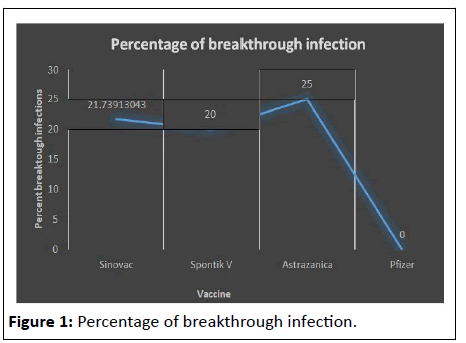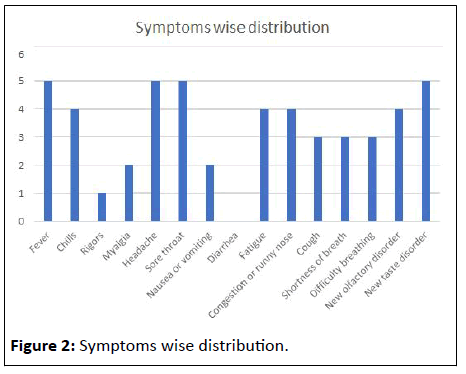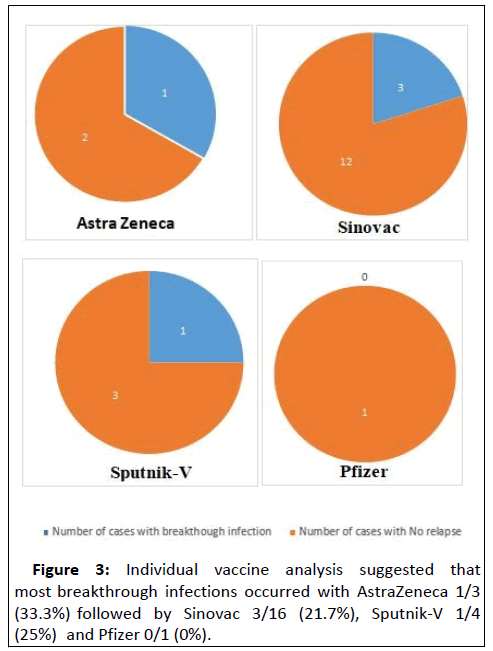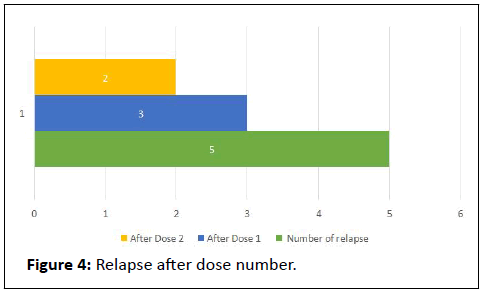Comparative Effectiveness of COVID-19 Vaccines
Khalid Javed*
Department of Pharmacy, Lahore Medical and Dental College, Lahore, Pakistan
- *Corresponding Author:
- Khalid Javed
Department of Pharmacy,
Lahore Medical and Dental College,
Lahore,
Pakistan,
Tel: 923158060962;
E-mail: khalidjaved962@gmail.com
Received date: October 18, 2022, Manuscript No. IPJPM-22-14844; Editor assigned date: October 21, 2022, PreQC No. IPJPM-22-14844 (PQ); Reviewed date: November 07, 2022, QC No. IPJPM-22-14844; Revised date: March 16, 2023, Manuscript No. IPJPM-22-14844 (R); Published date: March 23, 2023, DOI: 10.36648/2572-5483.8.3.186
Citation: Javed K (2023) Comparative Effectiveness of COVID-19 Vaccines. J Prev Med Vol:8 No:3
Introduction
Comparative effectiveness of COVID-19 vaccines is a research study that includes 23 cases of commonly used COVID-19 vaccines administered in Pakistan. The data was collected through semi-structured interviews in tertiary healthcare hospitals in the Hazara region [1]. The study utilized post vaccination relapse of disease or breakthrough infections as criteria to assess the comparative effectiveness of COVID-19 vaccines. The data was analyzed using SPSS and Microsoft Excel-2016 [2]. Results suggested that Pfizer was most effective to prevent breakthrough infection and relapse of disease, while Sputnik-V was most effective to reduce the severity of symptoms on relapse. Investigate SARS-CoV-2 breakthrough infections among healthcare workers who received the COVID-19 vaccine to identify trends or clustering in patient characteristics, the administered vaccine and their comparative effectiveness to prevent relapse and severity of symptoms [3,4].
Data collected
Total 23 healthcare workers included i.e., 15 doctors, 5 nurses and 3 other HCW.
Sinovac cases=15
Sputnik-v cases=4
AstraZeneca cases=3
Pfizer cases=01
Total relapse cases=05
Description
Comparative effectiveness
The data analysis using SPSS and Microsoft Excel-365. Suggests that the majority (95%) of the HCWs who reported clinical symptoms of breakthrough infection had either severe fever (100%) New olfactory disorder (100%) and new taste disorder (100%) while 90% of the HCWs had >3 sever and moderate symptoms. The most frequent symptoms included fever (100%), cough (60%), headache (100%), malaise (60%), sore throat (70%), runny nose (70%) and shortness of breath (90%) (Figures 1 and 2).
Individual vaccine analysis
Individual vaccine analysis suggested that most breakthrough infections occurred with AstraZeneca 1/3 (33.3%) followed by Sinovac 3/16 (21.7%), Sputnik-V 1/4 (25%) and Pfizer 0/1 (0%) [5,6]. A comparison of the vaccine based on the percentage of relapse of breakthrough infections suggests that Pfizer was most effective in preventing post-vaccination relapse of disease while AstraZeneca was least effective in the population studied. Most relapse or breakthrough infections occurred after the first dose 3/5 (60%) while 2/5 (40%) after the second dose [7]. The data on effectiveness for Pfizer is currently limited due to a shortage of vaccines in-country online foreign visitors are allowed to take this vaccine (Figures 3 and 4).
Conclusion
In conclusion, the current report reconfirms the possibility of post-vaccination COVID-19 infection among HCWs. Although the results cannot be generalized because of limited population inclusion and neglecting the other elements including individual condition, rate of exposure, underlying health conditions and medications. A comparison of vaccine effectiveness based on clinical symptoms on relapse shows that all vaccine is equally effective to reduce the severity of symptoms in a postvaccination relapse of disease. Sputnik-V was found more effective in reducing the severity of the new olfactory disorder in a patient with a relapse of the disease as well as it reduces the severity of all other symptoms compared to other alternatives.
References
- Amanatidou E, Gkiouliava A, Pella E, Serafidi M, Tsilingiris D, et al. (2022) Breakthrough infections after COVID-19 vaccination: Insights, perspectives and challenges. Metabol Open 100180
[Crossref] [Google Scholar] [PubMed]
- Bajema KL, Dahl RM, Evener SL, Prill MM, Rodriguez-Barradas MC, et al. (2021) Comparative effectiveness and antibody responses to moderna and Pfizer-BioNTech COVID-19 vaccines among hospitalized veterans-five veterans affairs medical centers, United States, February 1-September 30, 2021. Morb Mortal Wkly Rep 70:1337-1343
- Li R, Liu H, Fairley CK, Zou Z, Xie L, et al. (2022) Cost-effectiveness analysis of BNT162b2 COVID-19 booster vaccination in the United States. Int J Infect Dis 119:87-94
[Crossref] [Google Scholar] [PubMed]
- Padula WV, Malaviya S, Reid NM, Cohen BG, Chingcuanco F, et al. (2021) Economic value of vaccines to address the COVID-19 pandemic: a US cost-effectiveness and budget impact analysis. J Med Econ 24:1060-1069
[Crossref] [Google Scholar] [PubMed]
- Risk M, Shen C, Hayek SS, Holevinski L, Schiopu E, et al. (2022) Comparative effectiveness of coronavirus disease 2019 (COVID-19) vaccines against the delta variant. Clin Infect Dis 75:623-629
[Crossref] [Google Scholar] [PubMed]
- Xie J, Feng S, Li X, Gea-Mallorqui E, Prats-Uribe A, et al. (2022) Comparative effectiveness of the BNT162b2 and ChAdOx1 vaccines against COVID-19 in people over 50. Nat Commun 13:1-8
[Crossref] [Google Scholar] [PubMed]
- Marco-Franco JE, Pita-Barros P, Gonzalez-de-Julian S, Sabat I, Vivas-Consuelo D (2021) Simplified mathematical modelling of uncertainty: Cost-effectiveness of COVID-19 vaccines in Spain. Mathematics 9:566
Open Access Journals
- Aquaculture & Veterinary Science
- Chemistry & Chemical Sciences
- Clinical Sciences
- Engineering
- General Science
- Genetics & Molecular Biology
- Health Care & Nursing
- Immunology & Microbiology
- Materials Science
- Mathematics & Physics
- Medical Sciences
- Neurology & Psychiatry
- Oncology & Cancer Science
- Pharmaceutical Sciences




